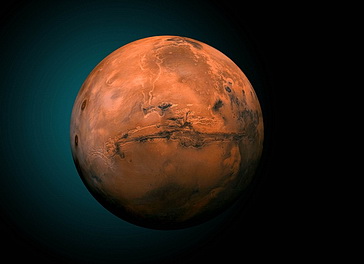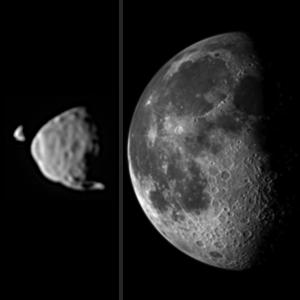
A Brief Explanation of Mars
Mars is the fourth planet from the sun. It is commonly known as the Red Planet due to its rusty-colored soil. It is the only rocky planet (rocky planets are those that are not made up of gasses, which includes all the inner planets), and it is the only one of these planets that have more than one moon.
Mars being the next planet to Earth takes about 30 Earth hours to orbit around the sun. We already have landed several rovers on Mars, gaining a lot of information about the red planet and its moons. Six rovers have landed on Mars so far (Sojourner, Spirit and Opportunity, Curiosity, Perseverance), and unbeknown to many, there is one from China, which landed on the planet on May 15th, 2021.
Mars’ Moons Overview
Renowned astronomer Asaph Hall discovered two moons on Mars in 1877. They are called Phobos and Deimos. These names have been given after the names of the twin sons of Ares, the god of war in Greek mythology. Mars was the Roman counterpart of Ares.
Phobos and Deimos are different from Earth’s moon and are among the smallest known moons of the solar system. They are more like captured asteroids by the planet’s gravity.

What are Mars’ Moons Made of?
Astromenors believe that Phobos and Deimos are made of carbon-rich rocks mixed with ice. It is also believed that they materialized from asteroids.
Phobos
Phobos, meaning panic or fear, is the larger moon of Mars and orbits very close to the planet, i.e. at 3,728 miles. This makes it the only moon in the Solar System that orbits that close to its planet. Phobos completes its orbit in around seven hours and completes three orbits in one Martian day. In its longest dimension, Phobos is only 17 miles long and has a gravitational pull of only 1/1,000th that of Earth.
Scientists have discovered that Phobos is gradually moving closer to its home planet, and every 100 years it moves around 5.9 feet closer to Mars’ surface. Additionally, researchers from the University of California, Berkeley have found that the gravitational pull of Mars, which is pulling Phobos towards it, has been opening grooves, as wide as 328–656 feet and as long as 33–98 feet, on the moon’s surface.
It is expected that Phobos will either collide with Mars or break up to form a ring around the planet in about 50 million years, so if you are planning on spending time on a Martian colony, plan to leave before the 50 million years are up. That’s just a heads-up! With that said, Phobos, being one of the darkest objects in our solar system and labeled ‘fear’, it would make for a good sci-fi movie!
Neptune’s moon Triton is also said to be in a similar situation, but we’ll discuss this moon at another time.
Deimos
Deimos, meaning terror, is the smallest of Mars’ moons measuring only about 9.3/7.8 miles across. However, it orbits farther away than the Phobos, i.e. at a distance of about 14.577 miles. It takes about 30 Earth hours for Deimos to complete one orbit. Deimos is also less irregular in shape than Phobos.
Both Phobos and Deimos are dark, reddish in color, cratered, lumpy, covered with dust, loose rocks, and elongated in shape rather than round. According to scientists, both of Mars’ moons seem to be captured asteroids or may be made up of carbon-rich rock and ice.
Although scientists have not yet confirmed how these moons were formed, some, like Julien Salmon from the Southwest Research Institute in Boulder, Colorado, and his associate Robin Canup claim that they were formed when a larger object was broken as a result of a collision. Mars’ moons have at least one thing common to the earth’s moon, and that is they both always present the same face to Mars, as does our moon to Earth.
Scientists have been thinking of using one of the moons as the astronauts’ base to observe the planet and to launch robots to the surface of Mars. NASA is continuing its ongoing mission of exploring and eventually landing a person on Mars.
Additionally, SpaceX is planning on landing people on Mars by 2024. Whether that is realistic or not, the fact remains that in 2022 and beyond, we have a lot to look forward to when it comes to space exploration!
